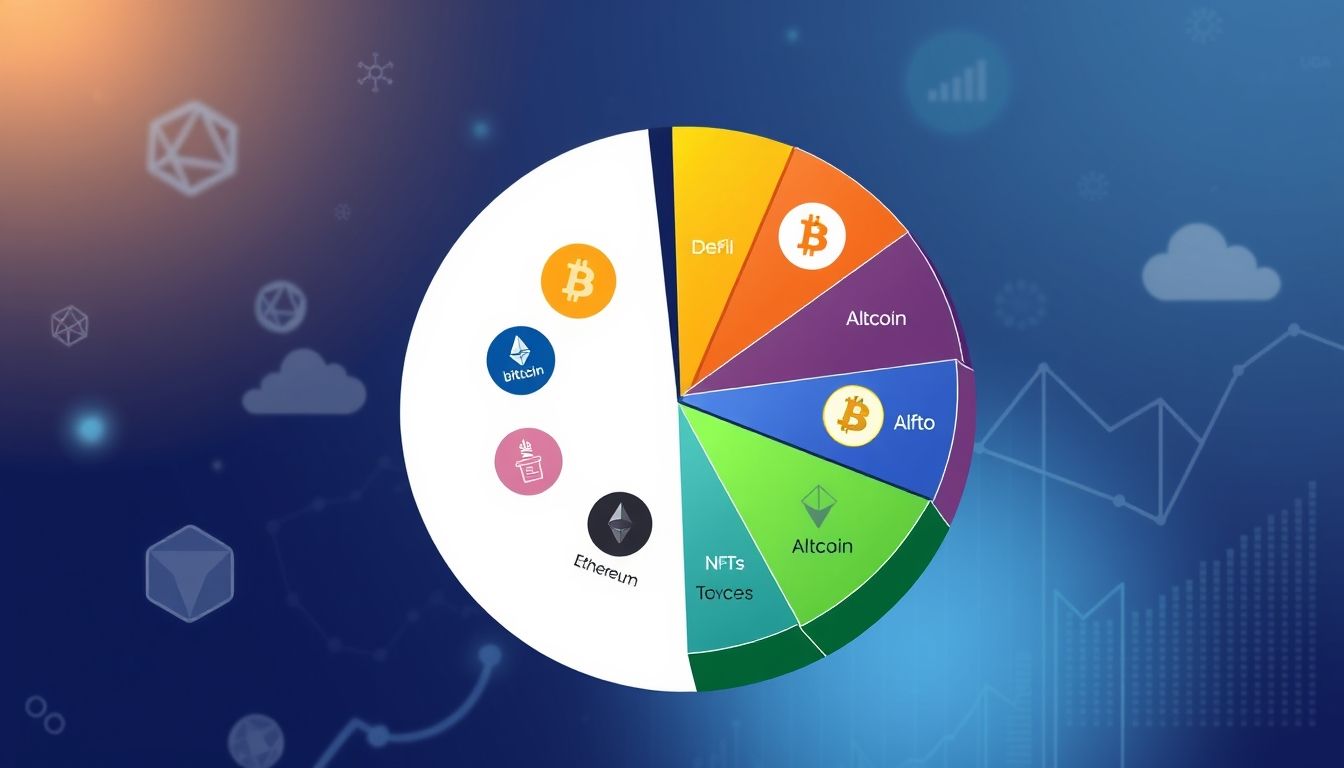Introduction to the World of Altcoins
The cryptocurrency market has experienced tremendous growth in recent years, and Bitcoin is no longer the only dominant digital currency. Thousands of altcoins have emerged, each promising technological innovations, solutions to specific problems, and attractive investment opportunities. However, with this immense growth comes significant risks that investors must understand and assess before diving into this volatile world.
Chapter 1: What are Altcoins?
Altcoins are any cryptocurrencies that are not Bitcoin. These currencies have emerged with the aim of improving or adding new features to Bitcoin's original blockchain technology. These improvements include increased transaction speed, improved privacy, smart contract execution, and more.
Types of Altcoins:
- Payment Coins: Aim to facilitate digital payments faster and cheaper than Bitcoin, such as Litecoin (LTC) and Bitcoin Cash (BCH).
- Smart Contract Coins: Support the execution of smart contracts on the blockchain, opening the door to decentralized applications (DApps) like Ethereum (ETH) and Cardano (ADA).
- Privacy Coins: Focus on concealing the identity of users and their transactions, such as Monero (XMR) and Zcash (ZEC).
- Meme Coins: Digital currencies based on jokes or popular trends on the internet, often driven by speculation, such as Dogecoin (DOGE) and Shiba Inu (SHIB).
Chapter 2: Motivations for Investing in Altcoins
Investing in altcoins attracts investors for several reasons:
- Potential for High Returns: Some altcoins have seen meteoric rises in value over a short period, providing opportunities for significant profits.
- Diversification of Investment Portfolio: Adding altcoins to an investment portfolio can help reduce overall risk, especially if these coins are not closely correlated with Bitcoin.
- Access to New Technologies: Investing in altcoins can be a way to learn about new and innovative technologies in the blockchain field and participate in the growth of these technologies.
Chapter 3: Risks Associated with Investing in Altcoins
Despite the attractive opportunities, investing in altcoins carries significant risks:
- High Volatility: Altcoin prices are highly volatile and can experience sharp declines in value over a short period.
- Lack of Regulation: The cryptocurrency market is still largely unregulated, increasing the risk of fraud and price manipulation.
- Liquidity Risks: It may be difficult to sell some altcoins quickly and at a fair price, especially if they have low trading volume.
- Security Risks: Cryptocurrency exchanges and digital currency wallets are vulnerable to hacking and theft of funds.
- Failed Projects: Many altcoin projects fail to achieve their goals, resulting in investors losing their money.
Chapter 4: Fundamental Analysis of Altcoins
Before investing in any altcoin, it is essential to conduct a thorough fundamental analysis:
Factors to Consider:
- Development Team: Does the team have the experience and resources necessary to develop the project?
- Whitepaper: Does the whitepaper clearly explain the project's vision, how it works, and its use cases?
- Project Community: Is there an active and supportive community for the project?
- Trading Volume and Liquidity: Is there sufficient trading volume for the cryptocurrency to ensure ease of buying and selling?
- Partnerships and Adoption: Has the project entered into partnerships with other companies or organizations? Is the cryptocurrency being adopted by users or businesses?
Chapter 5: Technical Analysis of Altcoins
In addition to fundamental analysis, technical analysis can be used to identify potential entry and exit points in the market:
Tools and Indicators Used:
- Price Charts: Analyzing historical price patterns to identify potential trends.
- Moving Averages: Determining the long-term price trend.
- Relative Strength Index (RSI): Measuring the strength or weakness of price movement.
- Moving Average Convergence Divergence (MACD): Identifying changes in the strength and direction of the price.
Chapter 6: Risk Management Strategies in Altcoin Investing
Risk management is crucial when investing in altcoins:
Risk Management Tips:
- Determine Risk Tolerance: Determine the amount you are willing to lose before investing.
- Diversify Your Portfolio: Don't put all your eggs in one basket. Invest in a variety of altcoins.
- Use Stop-Loss Orders: Set a specific price to sell the cryptocurrency if its price falls to a certain level.
- Don't Invest More Than You Can Afford to Lose: Don't invest money you need to cover your basic expenses.
Chapter 7: The Future of Altcoins
The future of altcoins is uncertain, but there are some potential trends:
- Increased Regulation: Governments are likely to impose more regulation on the cryptocurrency market.
- Increased Adoption: Cryptocurrencies are expected to become more popular and used for payments and everyday transactions.
- Technological Developments: We are likely to see new and innovative developments in blockchain technology, leading to the emergence of new altcoins.
Chapter 8: Examples of Promising Altcoins
Here are some examples of altcoins worth following (keeping in mind that this is not investment advice):
- Ethereum (ETH): A leading platform for smart contracts and decentralized applications.
- Cardano (ADA): A third-generation blockchain focused on sustainability and security.
- Solana (SOL): A fast and cost-effective blockchain.
- Polkadot (DOT): A protocol that enables interoperability between different blockchains.
Chapter 9: Altcoin Trading Platforms
There are many cryptocurrency trading platforms that allow you to buy and sell altcoins:
Examples of Trading Platforms:
- Binance: The largest cryptocurrency trading platform in the world.
- Coinbase: An easy-to-use trading platform suitable for beginners.
- Kraken: A reputable trading platform offering a wide range of cryptocurrencies.
- Bybit: A trading platform focused on derivatives and leverage.
Note: Before using any trading platform, be sure to do thorough research and check its reputation and security.
Chapter 10: Tips for New Altcoin Investors
If you are new to the world of altcoins, here are some tips that may help you:
- Start Small: Don't invest large amounts at first. Start with small amounts and learn how the market works.
- Do Your Research: Before investing in any cryptocurrency, do thorough research and understand the project.
- Be Patient: Investing in cryptocurrencies is a long-term investment. Don't expect to make quick profits.
- Be Wary of Scams: Be wary of false promises and guaranteed profits.
- Consult a Financial Advisor: If you are unsure how to invest in cryptocurrencies, consult a qualified financial advisor.
Disclaimer: This article is for informational purposes only and does not constitute investment advice. Investing in cryptocurrencies carries high risks, and you may lose all of your money.




